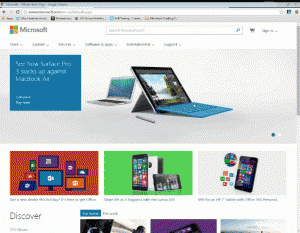A common debate for brands just starting their Social Care journey, is whether customer service should be delivered from the brand’s primary Twitter handle or if a dedicated service handle should be created.
This decision also differs from industry to industry. If airlines or hotels have a company ethos of good service, their online presence should represent this through the brand handle. For insurance or finance brands, where service interactions are more rigid, a separate Twitter handle could be the right approach. Companies have been successful with both approaches, meaning that there is no clear cut answer but instead a series of pros and cons to weigh for your specific goals on social for service.
Argument for a dedicated Twitter handle
- Separation of ownership: Creating handles for distinct purposes enables each department to have full ownership of their processes and activities. This mirrors the division of ownership on other channels, where dedicated email addresses and phone numbers are used to reach customer support.
- Separate tone for social customer service: Having a separate service handle enables brands to create a tone that is different from the one used by marketing. For example, some brands choose a more formal tone on their Twitter account for marketing but be more colloquial when providing social customer service.
- Dedicated service updates: Some customers might want to engage with your brand, but might be weary of marketing updates. Having a dedicated handle alleviates this concern and can also provide customers with service-only updates––a huge plus for brands in industries in which a single published post can preemptively resolve a large number of customer queries.
- Analytics and reporting: Customer Service has a different set of KPIs and success metrics from PR and marketing, with a greater emphasis placed on SLAs and efficiency measures. Separate accounts make it easier to track and report on the performance of each team without dilution from the activity of the other.
Argument for your brand’s Twitter account for care
- Limited consumer visibility: The primary handle is likely to have far more visibility and will be easier to find. Most customers will not go through the trouble to find out if there is a dedicated support handle, and will send their support inquiries directly to the primary account. This means that customer service will need to monitor content coming in to both accounts, and engage customers with service issues from the support account.
- Marketing opportunity: Actively engaging in customer service on Twitter using the primary brand account usually results in a significant increase in followers. Each new follower becomes a potential recipient of future marketing and promotional communications.
- Consistency of voice: A single brand handle can increase consistency of messaging, creating a stronger and more unified voice. This positions service as a core offering, synonymous with the brand reputation on social media.
- Process consistency across social channels: While creating dedicated support accounts is more common on Twitter, it is not standard practice on other social channels, such as Facebook, Instagram and Messenger. A dedicated support handle requires different workflows and processes than on other social channels, adding complexity to documentation and training.
There is no clear cut answer between approaches, with organizations needing to adapt an approach that suits their business needs–both internally and externally. What is clear however, is that to be successful companies must scale their approach to social customer service in line with consumer demand, having a platform in place that can scale with them.
Digital & Social Articles on Business 2 Community
(60)
Report Post




